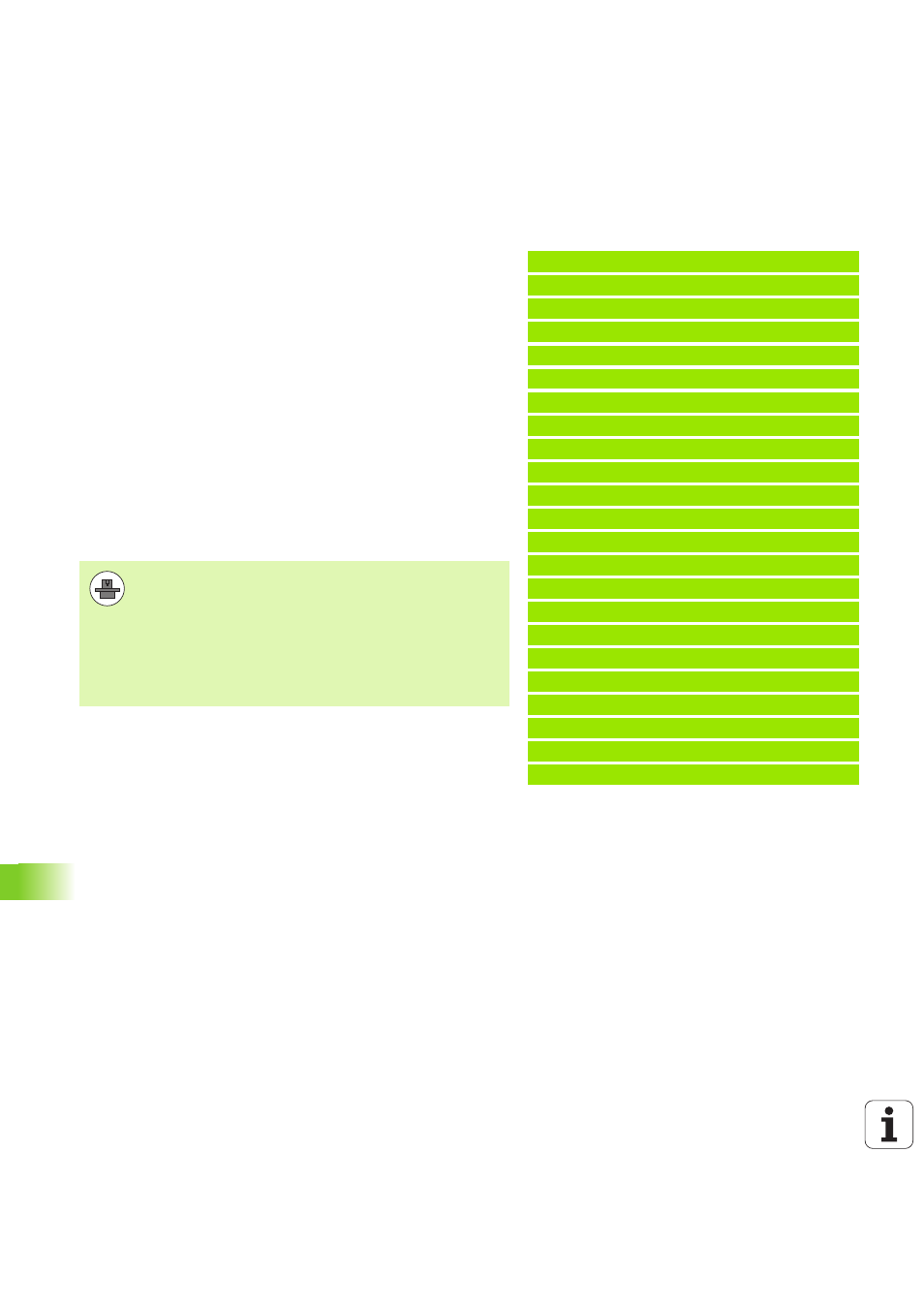Various modes (q406), Siehe „various modes (q406)” auf seite 494) – HEIDENHAIN iTNC 530 (60642x-04) Cycle programming User Manual
Page 494

494
Touch Probe Cycles: Automatic Kinematics Measurement
1
8
.4 MEA
S
URE KINEMA
TICS (Cy
c
le 451, DIN/ISO:
G451; Option)
Various modes (Q406)
Test mode Q406 = 0
The TNC measures the rotary axes in the positions defined and
calculates the static accuracy of the tilting transformation.
The TNC records the results of a possible position optimization
but does not make any adjustments.
Position Optimization mode Q406 = 1
The TNC measures the rotary axes in the positions defined and
calculates the static accuracy of the tilting transformation.
During this, the TNC tries to change the position of the rotary axis
in the kinematics model in order to achieve higher accuracy.
The machine data is adjusted automatically.
Position and Angle Optimization mode Q406 = 2
The TNC measures the rotary axes in the positions defined and
calculates the static accuracy of the tilting transformation.
First the TNC tries to optimize the angular orientation of the rotary
axis by means of compensation (Option #52, KinematicsComp).
If the TNC succeeded in optimizing the angular orientation, it then
optimizes the position through another measurement series.
Beispiel: Angle and position optimization of the
rotary axes after automatic datum setting
1 TOOL CALL "TS640" Z
2 TCH PROBE 451 MEASURE KINEMATICS
Q406=2
;MODE
Q407=12.5 ;SPHERE RADIUS
Q320=0
;SET-UP CLEARANCE
Q408=0
;RETR. HEIGHT
Q253=750
;F PRE-POSITIONING
Q380=0
;REFERENCE ANGLE
Q411=-90
;START ANGLE A AXIS
Q412=+90
;END ANGLE A AXIS
Q413=0
;INCID. ANGLE A AXIS
Q414=0
;MEAS. POINTS A AXIS
Q415=-90
;START ANGLE B AXIS
Q416=+90
;END ANGLE B AXIS
Q417=0
;INCID. ANGLE B AXIS
Q418=4
;MEAS. POINTS B AXIS
Q419=+90
;START ANGLE C AXIS
Q420=+270 ;END ANGLE C AXIS
Q421=0
;INCID. ANGLE C AXIS
Q422=3
;MEAS. POINTS C AXIS
Q423=3
;NO. OF MEAS. POINTS
Q431=1
;PRESET
Q432=0
;BACKLASH, ANG. RANGE
For angle optimization, the machine manufacturer must
have adapted the configuration correspondingly. You can
ask your machine manufacturer if this is the case, and
whether an angle optimization makes sense. Angle
optimization can be particularly useful on small, compact
machines.
Angle compensation is only possible with Option #52
KinematicsComp.